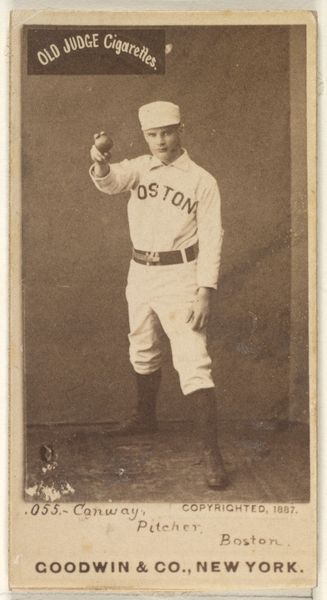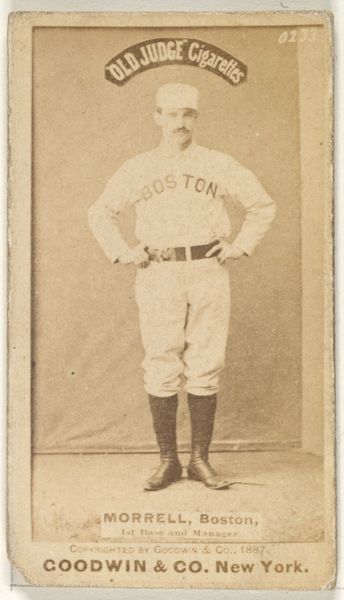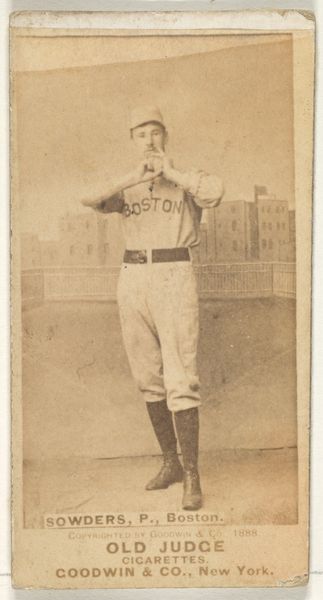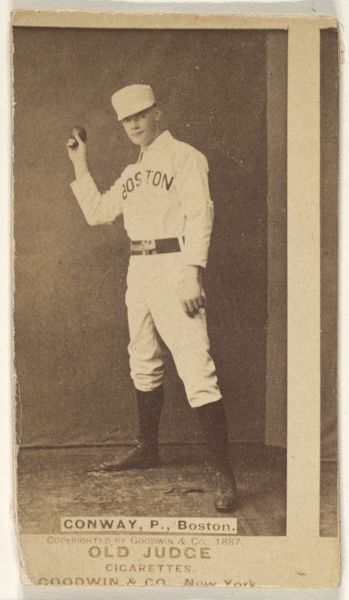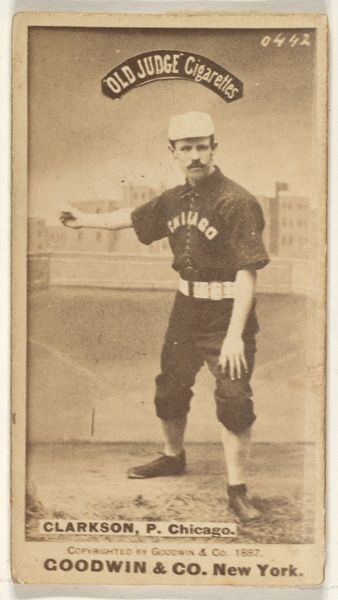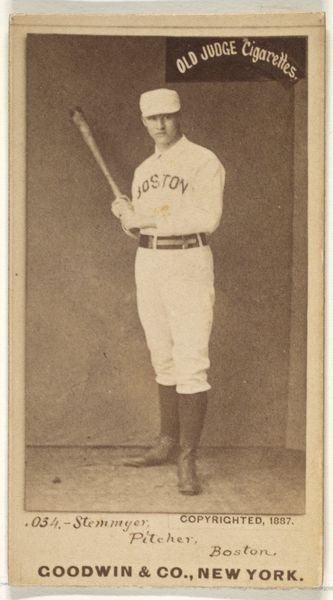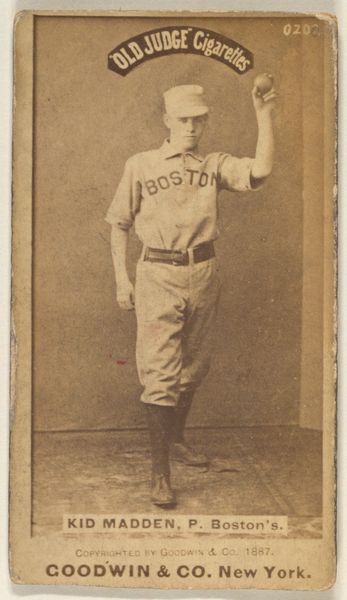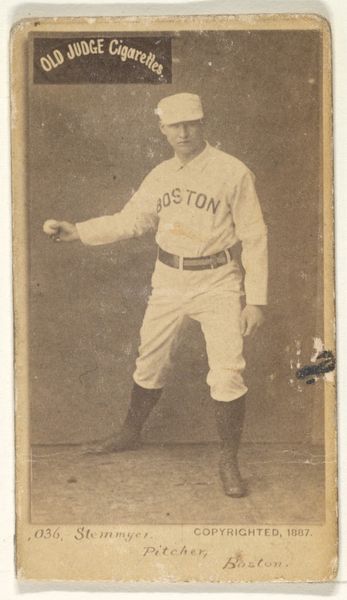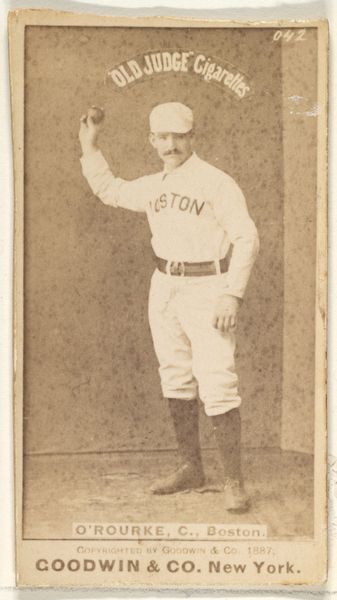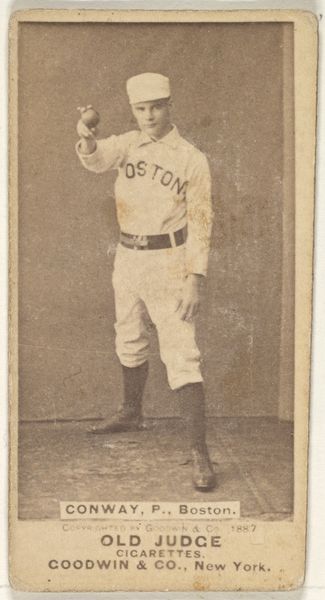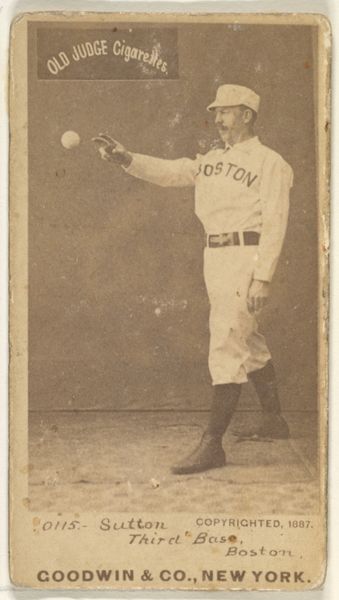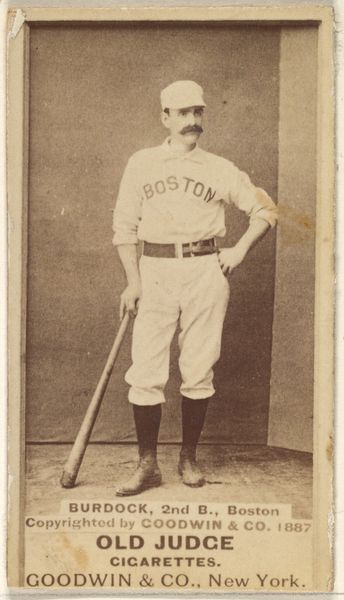
Sutton, 3rd Base, Boston, from the Old Judge series (N172) for Old Judge Cigarettes 1887
0:00
0:00
print, photography, collotype
#
portrait
# print
#
baseball
#
photography
#
collotype
#
19th century
#
men
Dimensions: sheet: 2 11/16 x 1 3/8 in. (6.9 x 3.5 cm)
Copyright: Public Domain
Curator: This is "Sutton, 3rd Base, Boston," a collotype from the Old Judge series created in 1887 by Goodwin & Company. Editor: The sepia tone lends an antique air. It makes the simple baseball diamond setting and Mr. Sutton seem somehow frozen in time. The tight cropping gives him a monumental feel, despite the card's probably very small size. Curator: Precisely. These cards were originally packaged with Old Judge Cigarettes. Their popularity grew rapidly. They reflect a burgeoning American fascination with baseball. But look closely—Sutton here, an athlete celebrated for his prowess, becomes commodified by being tied to tobacco. We must address those intertwined issues. Editor: Interesting point. And from a production standpoint, it shows how the mass production of photographic images shifted with new technologies of reproduction. Think about the number of cards that must have been printed, shipped, and circulated. It must have created unprecedented material demand on a grand scale for print and packaging. Curator: Exactly. What do these cards say about turn-of-the-century America’s idealized athletic figures? It’s an interplay of capitalism, identity, and a yearning for a particular kind of national heroism, constructed during this era of rising nationalism. And who had access to these images and what did this signify? Editor: And speaking about that kind of access, tobacco had its workforce: who labored to create the Old Judge Cigarettes to begin with, who boxed the set of collectibles? Labor issues and how tobacco farming shaped social relations seems important to unpack when studying the legacy of those collectible photographs. Curator: Absolutely. To consider the societal context, this card participates in forming and reflecting dominant attitudes. Who has the right to visibility, whose stories get told and how are very important to consider, as images were and are capable of consolidating privilege or challenging marginalization. Editor: The materiality also evokes other issues. The use of the collotype process hints at labor conditions, global resource supply, as well as distribution chains during this industrial period. It goes way beyond sport celebration! Curator: Spot on. Hopefully, thinking about the intersection between visual representation and material production of those images helps bring fresh perspectives on such seemingly banal ephemera! Editor: For me it's about expanding how we look at objects from a tangible making approach as they inform historical perspectives and bring in societal impacts of images like "Sutton, 3rd Base, Boston.”
Comments
No comments
Be the first to comment and join the conversation on the ultimate creative platform.
